This site is part of various affiliate programs. Links may give us a small compensation for any purchases you make, at no additional cost to you. Please read the disclaimer policy for full details.
Note: When this article was first published in 2021, it was possible to find some excellent cameras under $300, but these have increased in price (sometimes substantially).
I’ve kept this list largely intact, noting which cameras have now increased above $300, as they are still excellent models if you have the extra budget.
With a saturated camera market, it’s hard to know which are the best cameras under $300 without spending a vast amount of time stuck in research mode. Like me, you are probably interested in knowing which cameras are great value for money, and which are perhaps less good, because you don’t want to make a mistake when choosing.
Luckily for you, I have already done a ton of research on the best under $300 digital camera, and have a solid checklist that has helped me to find all of the top rated cameras, and leave out the duds. I don’t want to waste your time, so only the best cameras, that meet all of my exacting criteria, are included.
In this article, I will cover what features you should care about when searching for a new camera, plus my top picks. The list of all the cameras that make the grade are below:
- Panasonic Lumix ZS70 – now around $500
- Panasonic LUMIX FZ80 – around $400 used
- Canon PowerShot SX420 – best optical zoom camera
- Sony DSCWX350 – pocket point and shoot camera
- Canon PowerShot SX620 – best PowerShot camera
- Canon PowerShot ELPH 360 – compact Canon camera
- KODAK PIXPRO Astro Zoom AZ401 – superzoom compact camera
- Nikon Coolpix W150 – best compact Nikon camera
- Kodak PIXPRO Friendly Zoom FZ43 – best budget point and shoot
- DJI Osmo Action – just over $300
What is the Best Camera Under $300?
If you want a pocket-sized camera, then it is the …
Light & Pocket-Sized with a Long Zoom
- 30x zoom in a light 0.53lb (243g) camera
- 180 degree flip up 3 inch touch screen, plus electronic view finder
- 4K video recording
- 20.3 Megapixel sensor with 5-axis optical image stabilization
- Well-designed control ring allows for easy manual operation
- Only weighs 0.536 lbs (243 g)
But if you want a long zoom range, then it is the …
Best for Long Zoom
- Massive 60x optical zoom using an optically stabilized lens
- High resolution, 18.1 Megapixel photos for reduced noise at high ISOs
- 4K video recording is possible at 30 fps
- Wide f2.8 – 5.9 aperture gives good low light performance for the sensor size
- Post focus feature lets you change the focal point after taking the photo
- Relatively large and heavy
Read More:
Learn the fundamentals of photo editing in Lightroom & Photoshop
What size of memory card should I buy?
Best Camera on a Budget
Best Camera Under $200
- 40x Optical Zoom (24-960mm equivalent) with Optical Image Stabilizer
- 16 Megapixel Sensor with 24mm wide angle lens (35mm equivalent), perfect for landscape photography
- Surprisingly Small & Light for Easy Carrying
- Quick Autofocus
- Great Entry-Level Camera for around $150
Comparison Table of the Best Digital Cameras Under $300
You can compare the best digital cameras under 300 dollars in the table below. The best camera for 300 dollars is the Lumix ZS70, but the LUMIX FZ80 is a close runner-up, and is better suited to those who want a longer zoom range, but all of these are good cameras under $300.
Camera | Optical Zoom | Photo Resolution | Video Resolution | Check Price |
Panasonic Lumix ZS70 | 30x | 20.3 MegaPixels | 4K / 30fps | |
Panasonic LUMIX FZ80 | 60x | 18.1 MegaPixels | 4K / 30fps | |
20x (25-500mm equivalent) | 18.2 MegaPixels | 1080p / 60 fps | ||
25x | 20.2 MegaPixels | 1080p / 30 fps | ||
42x (24-1080mm equivalent) | 20.0 MegaPixels | 720p / 25 fps | ||
12x (25-300mm equivalent) | 20.2 MegaPixels | 1080p / 30 fps | ||
10x (24-240mm equivalent) | 20.0 MegaPixels | 720p / 30 fps | ||
8x (28-224mm equivalent) | 20.0 MegaPixels | 720p / 30 fps | ||
| 40x | 16.1 MegaPixels | 720p / 30 fps | |
3x | 13.2 MegaPixels | 1080p / 30 fps | ||
4x | 16.0 MegaPixels | 720p / 30 fps | ||
N/A | 12.0 MegaPixels | 4K / 60 fps; 1080p / 240 fps |
Reviews of the Best Cameras Under $300
Take a look at the full reviews for the top ten cameras under $300 below, including the best point and shoot camera under 300 dollars, the Panasonic LUMIX ZS70.
1. Panasonic Lumix ZS70
Best Vlogging Camera Under $300
- Sensor: 1/2.3″
- Photo Resolution: 20.3 MegaPixels
- Image Stabilization? Yes
- Optical Zoom Range: 30x (24-720mm equivalent)
- Max Video Resolution: 4K / 30fps
- Screen: 3-inch flippable touch screen, plus viewfinder
- Other Features: WiFi, USB charging
- Weight: 0.54 lbs (243 g)
The Lumix ZS70 is the smaller brother to the FZ80 seen below, losing a few features but available in a much smaller and lighter camera body. It’s this very small size and less than half a pound weight that makes it the best camera under $300 for me, as it easily fits in a pocket and is hardly noticeable to carry around all day.
You can record in 4K with this camera, and 1080p recording works at a frame rate up to 60 fps, providing the ability for slow motion video at about 1/2 the speed, and the lower resolution VGA recording works at 240 fps. These frame rates are pretty incredible at this price point, and make the ZS70 the best YouTube camera for those on a budget, as you are able to shoot all manner of professional-looking videos.
If you wanted a professional camera under $300, the Lumiz ZS70 would be your best bet, although if you have the budget, you can get much more for your money.
The 30x zoom, covering 35mm equivalent focal lengths of 24 – 720mm means that the camera is well-suited for bird or wildlife photography, and combined with the 5-axis IBIS, photos are still sharp with great colors even at the longest end of the lens.
If you want 4K video, and a 180 degree flippable touchscreen, then the Panasonic Lumix ZS70 is the ideal pocket point and shoot camera, and is a bargain as the best video camera under 300 dollars.
- Pros:
- Powerful 30x zoom covers most situations
- Very lightweight and small – fits in a pocket perfectly
- Strong image stabilization to eliminate hand shake
- Records 4K video at a 30fps, 1080p at 60fps and 720p at 120fps for amazing slow motion footage, and 240fps in VGA resolution
- Lens-mounted control ring for intuitive manual control of exposure, zoom or focus
- Includes a time-lapse mode for creative videos
- 1170k-dot live view viewfinder for use in sunny conditions
- Can use WiFi to transfer photos to your phone
- Shoots in RAW format for higher quality photos
- Cons:
- Shorter zoom range than larger cameras
Note: the same camera is available with many other new features in the upgraded Panasonic LUMIX ZS80, although at a price above $300. The Lumix ZS50 is the same as the ZS70, but without 4K recording or a touch screen, and is the best camera for under $250. The very similar Panasonic Lumix ZS60 is essentially the same camera as the ZS70, although it reduces the megapixel count from 20.3 to 18, also reducing the price.
2. Panasonic LUMIX FZ80
Long Zoom Range
- Sensor: 1/2.3″
- Photo Resolution: 18.1 MegaPixels
- Image Stabilization? Yes
- Optical Zoom Range: 60x (20-1200mm equivalent)
- Max Video Resolution: 4K / 30fps
- Screen: 3-inch touchscreen, plus viewfinder
- Other Features: WiFi, USB charging
- Weight: 1.36 lbs (617 g)
As the best compact camera under $300, the Lumix FZ80 is pretty much unbeatable at this price point. Panasonic have stuffed their camera with features, including the ability to shoot 4K video, a massive 60x zoom with optical stabilization, and a remarkable post focus feature that lets you set your desired focus points after taking the photo, ensuring that you don’t end up with soft focus.
Having a 3 inch touchscreen and WiFi to transfer photos straight to your phone just shows the extra care taken in the design of this camera, and its higher quality over its competitors. With the ease of WiFi connection, this is without doubt the best compact camera with WiFi.
As this is the compact camera with best zoom, you are ideally placed for wildlife photography, or even basic astrophotography, with the top end of the zoom range allowing you to nearly fill the frame with the moon.
Image quality is obviously not at the same level as a DSLR or mirrorless camera, but pictures are surprisingly sharp, with colors that pop without having to modify any additional settings. There is minimal shutter release lag once you have half-pressed the shutter to lock the focus, and with the ability to shoot in RAW, you get the maximum amount of image data in each photo for maximum editing leeway.
One of the many standout features is the ability to shoot in 4K, which is not present on any other camera reviewed here. You can record at 30 fps at this resolution, or 60 fps at 1080p, opening up the possibility for you to create slow motion videos.
Overall, it is not surprising that I would consider the FZ80 to not only be the best bridge camera under $300, but also the overall best camera under $300.
- Pros:
- Massive 60x optical zoom using a stabilized lens
- High resolution, 18.1 Megapixel photos
- Post focus feature lets you change the focal point after taking the photo
- 4K video recording is possible at 30 fps
- Wide f2.8 – 5.9 aperture gives good low light performance for the sensor size
- Lets you shoot in RAW for maximum editing flexibility
- 1040k-dot 3-inch touchscreen for easy camera control
- Can use WiFi to transfer photos straight to your phone
- 1170k-dot electronic viewfinder for photography in bright conditions
- Cons:
- Only just under $300
- As this is a bridge camera, there is no option to change lenses, and there is no focus or zoom rings on the lens.
3. Sony DSCWX350
Best Sony Point and Shoot Camera
- Sensor: 1/2.3″
- Photo Resolution: 18.2 MegaPixels
- Image Stabilization? Yes
- Optical Zoom Range: 20x (25-500mm equivalent)
- Max Video Resolution: 1080p / 60 fps
- Screen: 3-inch
- Other Features: WiFi, NFC
- Weight: 0.23 lbs (105 g)
With 20x optical zoom and decent image stabilization, the Sony DSCWX350 is very good for most photography uses, from portraits to wildlife, but where it really stands out is as a travel camera. The very light weight and small size make it incredibly easy to carry around all day in a pocket, with the fully retracting lens when the camera is switched off.
Sony are well-known for providing strong autofocus capabilities and sensors with good low light performance, and the DSCWX350 doesn’t disappoint in either respect. AF locks on quickly, and can track subjects when in video mode, and the highly regarded Bionz X image processor keeps noise low when shooting in dark environments.
You can record video at 60 fps in 1080p resolution, which is good for such a small camera, but you don’t get 4K, and there is no viewfinder making compositions tricky in bright environments.
Although the Lumix cameras reviewed above are objectively better than this Sony in most regards, the DSCWX350 is the best pocket point and shoot superzoom, if a small form factor is your biggest requirement.
- Pros:
- 20x optical zoom covers most photography uses
- Super-compact and lightweight camera that is easy to carry all day
- Records 1080p video at 60 fps
- High resolution 18 Megapixel sensor for good low light performance
- Strong autofocus with lock-on option
- Includes WiFi and NFC for transferring photos straight to your phone
- Cons:
- No viewfinder
- Expensive for the specs
Note: essentially the same camera but with reduced optical zoom and video resolution is available at about half the price in the Sony DSCW830 and the Sony DSCW800.
4. Canon PowerShot SX620
Best Small Canon Camera
- Sensor: 1/2.3″
- Photo Resolution: 20.2 MegaPixels
- Image Stabilization? Yes
- Optical Zoom Range: 25x (25-625mm equivalent)
- Max Video Resolution: 1080p / 30 fps
- Screen: 3-inch
- Other Features: WiFi, NFC
- Weight: 0.40 lbs (181 g)
As the best small canon camera, the Powershot SX620 is a good choice for those wanting a point and shoot that simply takes pictures with no fuss, and doesn’t take up much space in a pocket or bag when not in use.
The 25x superzoom with image stabilization means that pictures are generally sharp and clear, and the WiFi and NFC mean that pictures can be transferred to your phone when on the go, without the use of a computer.
1080p video recording at 30 fps is useful, though not spectacular, but should suffice for most home uses.
Overall, the SX620 is a good choice for those looking for a small form factor Canon camera, that has a small learning curve, and which still offers high resolution photos.
- Pros:
- Very good 25x optical zoom with image stabilization
- Very small and lightweight, with a fully retracting lens
- Good color reproduction with images that pop
- 1080p video recording at 30 fps
- WiFi and NFC for easy image transfer to your phone
- Easy to use, even for beginners
- Cons:
- No USB charging
- No manual mode
- Poorer low light performance when compared with competitors
5. Canon PowerShot SX420
Superzoom Canon Cameras Under $300
- Sensor: 1/2.3″
- Photo Resolution: 20.0 MegaPixels
- Image Stabilization? Yes
- Optical Zoom Range: 42x (24-1080mm equivalent)
- Max Video Resolution: 720p / 25 fps
- Screen: 3-inch
- Other Features: WiFi, NFC
- Weight: 0.72 lbs (326 g)
Bridge cameras like the Powershot SX420 are known for much more powerful, higher quality zooms than the pocket point and shoot cameras that otherwise tend to predominate in this price bracket. The 42x zoom works well in combination with the image stabilization feature to produce sharp photos, even of distant objects, but you do get a more bulky, heavier camera as a result, which some may not enjoy carrying all day.
You do get some ability to control the camera manually, setting aperture and shutter speed, although you cannot choose autofocus points, nor do you get the ability to shoot in RAW format, although this is less of an issue with Canon cameras, that are well-known to produce colorful, vibrant photos by default.
If you want a longer zoom range, the Canon PowerShot SX540 is otherwise identical but has a 50x optical zoom.
- Pros:
- Very good 42x optical zoom with image stabilization
- Good 20 megapixel resolution for stronger low light performance
- Lovely colors in images that pop
- Excellent value for money
- NFC and WiFi for easy photo transfers
- Cons:
- Slower autofocus performance
- No viewfinder
- Not pocket-sized
6. Canon PowerShot ELPH 360
Best Canon PowerShot Camera
- Sensor: 1/2.3″
- Photo Resolution: 20.2 MegaPixels
- Image Stabilization? Yes
- Optical Zoom Range: 12x (25-300mm equivalent)
- Max Video Resolution: 1080p / 30 fps
- Screen: 3-inch
- Other Features: WiFi, NFC
- Weight: 0.33 lbs (147 g)
As one of the best PowerShot cameras, the Canon ELPH 360 is the older brother to the ELPH 190 and 180 models, with an upgraded zoom range and the ability to shoot 1080p video at 30 fps.
This is essentially a basic camera for those who want a camera to simply be of the point and shoot variety, and to work with little effort or stress on their part, which the 360 does very well. You have a minimal startup time, a solid AF system and plenty of auto modes to help you capture the photos you want.
The eco mode to improve battery life helps extend the use of the camera to around 250 photos before charging is needed, which should be plenty for most hobbyist photographers, and some more premium features like WiFi mean that you can easily transfer photos straight to your phone.
Colors looks good, as with any Canon camera, and pictures ‘pop’ with very little to no editing needed. Overall, you have a solid entry-level beginner camera in the Canon PowerShot ELPH 360.
- Pros:
- 12x optical zoom is very usable, particularly with the image stabilization
- Small, light and quick to startup and use
- Auto exposure modes work well and get decent photos
- WiFi allows transfer of photos to your phone
- Eco mode to improve battery life
- Solid autofocus system
- Cons:
- Low light performance is not the best, but is not terrible either
- Not a very ‘tough’ construction, or weather-sealed
Note: you can save some money if you are willing to get a smaller optical zoom. The Canon ELPH 180 is essentially the same camera, but with an 8x optical zoom, while the Canon ELPH 190 has a 10x optical zoom. Other than that, the above review also applies to both of these.
7. KODAK PIXPRO Astro Zoom AZ401
Best Kodak Bridge Camera
- Sensor: 1/2.3″
- Photo Resolution: 16.1 MegaPixels
- Image Stabilization? Yes
- Optical Zoom Range: 40x (24-960mm equivalent)
- Max Video Resolution: 720p / 30 fps
- Screen: 3-inch
- Other Features: –
- Weight: 0.98 lbs (445 g)
The Kodak Astro Zoom series are aimed at budding photographers looking for a super-zoom lens for telephoto photography, such as astrophotography or other long-range shooting, and they are very good at it.
The image stabilization in the 40x optical zoom lens works well and lets you take sharp photos of distant objects. The face detection feature gives you perfectly exposed close up photos if you use the wider end of the lens, which has the 35mm equivalent focal length of 24mm – a good wide angle view for everyday photography.
Video quality is relatively poor, as the camera can only record at 720p max resolution, but this is reflected in the price, with the AZ401 being only slightly more than half the price of the Lumix FZ80, which is similar but can record in 4K.
If you want superzoom bridge camera at a low price, then this Kodak model is going to be your best bet, although I would recommend upping the budget a little, and getting something like the Canon PowerShot SX420 at least, or even the Panasonic LUMIX FZ80.
- Pros:
- 40x optical zoom with image stabilization
- Low price for a super-zoom
- Good quality still photos, even at maximum zoom
- Face / cat / dog detection to automatically enhance subject highlighting, plus blink / smile detection
- 720p video recording
- Cons:
- No viewfinder
- Relatively bulky
- Doesn’t record 1080p video
8. Nikon Coolpix W150
Best Compact Nikon Camera
- Sensor: 1/3.1″
- Photo Resolution: 13.2 MegaPixels
- Image Stabilization? Yes
- Optical Zoom Range: 3x (30-90mm equivalent)
- Max Video Resolution: 1080p / 30 fps
- Screen: 2.7-inch
- Other Features: WiFi, Bluetooth
- Weight: 0.39 lbs (178 g)
The Nikon Coolpix W150 is the best compact Nikon camera in my opinion, thanks to its rugged construction and the ability to use it underwater. This is not the ultimate point and shoot camera for everyday use as it is otherwise very limited, with only a 3x optical zoom and a relatively small, low resolution sensor, but it is built to last and can survive quite a few knocks and falls, making it particularly suitable as a children’s camera.
The menu system is very straightforward and well-designed, so that even the youngest members of your family are likely to be able to get shooting without any difficulty, with the various modes helping to direct your photography. The large buttons on the back are simple to use, even for larger hands, and really make it clear how annoying the small buttons are that you find on other camera models.
Essentially, if you need a family camera that can put up with being dropped and gives you the ability to take wonderful pictures underwater, then you won’t go wrong with the Nikon W150.
- Pros:
- Lightweight and small and rugged – this can take a few knocks
- Simple to use with a menu system that doesn’t get in the way of taking photos
- Waterproof down to 33 feet (10 m), and shockproof when dropped from less than 5.9 ft
- Sound recording works even underwater
- ‘Shoot underwater’ and ‘underwater face framing’ modes
- WiFi to transfer photos easily
- 1080p video recording at 30 fps
- Cons:
- Only 3x optical zoom
- Smaller sensor than other models in this article
- Poor low light performance, with limited ISO range of 125-1600
9. Kodak PIXPRO Friendly Zoom FZ43
Cheapest Point and Shoot Camera
- Sensor: 1/2.3″
- Photo Resolution: 16.0 MegaPixels
- Image Stabilization? No
- Optical Zoom Range: 4x (27-108mm equivalent)
- Max Video Resolution: 720p / 30 fps
- Screen: 2.7-inch
- Other Features: –
- Weight: 0.26 lbs (118 g)
Although the Kodak FZ43 is a very basic camera, it does the job of taking pictures very well. The 1/2.3″ sensor offers 16 megapixels, which is comparable with the best cameras under $300, but at only a fraction of the price. In fact, this is one of the best cameras under $100, with its light weight and simple operating system.
You only get a 4x optical zoom, with the widest setting giving you the 35mm equivalent of a 27mm focal length, which is adequate for everyday use, but is not especially wide for more specialist uses like landscape photography.
The Kodak drains batteries very quickly, and as it uses standard AA batteries, it would make sense to buy a set of rechargeable batteries to save money and prevent waste.
But if you need a very cheap, easy to use point and shoot camera, then the Kodak FZ43 fits the bill.
- Pros:
- Very cheap and offering great value for money
- Sensor and resolution is comparable with cameras 5x the price
- Lightweight and easy to carry
- Perfect beginner camera
- Cons:
- No viewfinder
- Feels ‘plastic-y’
- Drains batteries quickly (and uses standard AA size)
10. DJI Osmo Action
Best 4K Action Camera
- Sensor: 1/2.3″
- Photo Resolution: 12 MegaPixels
- Image Stabilization? Yes
- Optical Zoom Range: –
- Max Video Resolution: 4K / 60 fps; 1080p / 240 fps
- Screen: Front – 1.4-inches; Back – 2.25-inches
- Other Features: WiFi
- Weight: 0.28 lbs (125 g)
DJI are traditionally a maker of consumer drones, but have now branched out into action cameras as well, rivaling GoPro. Although an action camera like this is not suitable if you require a long zoom range, the Osmo is worth looking at for its very small size and weight, and the ability to use it in many different environments.
The DJI Osmo is essentially a direct competitor to the GoPro HERO8, but at a considerably cheaper price. It has a 1/2.3″ sensor that delivers photos at 12 megapixels, which is comparable to some of the other budget cameras in this article, but photo ability is not really what the Osmo is about. This camera is designed primarily for video.
You can record at 4K at 60 fps, which must make this one of the cheapest 4K cameras around, and certainly puts it into competition with the best cameras under 300 dollars. Video quality is excellent, with smooth, sharp footage recorded, and better yet, the Osmo can record 1080p video at an incredible 240 fps, meaning you can slow down footage by a factor of 8. Slow motion videos look very professional when shot on this.
The RockSteady image stabilization algorithms really work well, delivering very steady footage, and mean that you don’t have to worry too much about keeping the camera still.
The only real negative is that as with all DJI products, you must register it with the company, otherwise it will stop working. If this is a concern for you, but you want an action camera, then I would recommend the GoPro HERO8, which is very similar to the Osmo.
- Pros:
- 4K video recording at 60 fps, and 1080p at 240 fps for super slow-mo videos
- Dual screen – one front and one back for easy selfie shooting
- Waterproof down to 36 ft
- Lens has a 145-degree fixed wide angle
- Five voice commands to control the device
- Excellent image stabilization feature
- A better product than the GoPro Hero 8, and at 2/3 of the price
- Cons:
- No viewfinder
- No optical zoom
- Must register with DJI or the camera gets locked
Key Features of the Best Cameras Under 300 Dollars
Before we get into the key features that you should care about in when searching for the best camera under 300 dollars, it’s worth asking yourself if you even need one for the type of photography you do. Often, a modern smartphone can take better quality photos than the cheapest models of camera, so why should you pick a camera over a smartphone?
A dedicated point and shoot camera or DSLR has several advantages over a phone, but you must decide whether these matter to you or not.
- Optical Zoom – Phones generally only offer digital zoom, which degrades the image quality as you zoom, but even the best point and shoot cameras under $300 have optical zooms which get you in much closer and offer excellent image quality. So, if you think that you will be shooting from a distance, then the best pocket zoom camera like the Canon PowerShot SX420 would suit you better than a phone.
- Better Manual Controls – If you want shallow depth of field, a fast shutter speed to capture motion, quick changes to white balance, or any other easy way to manually change your camera, then phones do not work as well as compact cameras, which have dedicated buttons for pretty much every useful function.
- Better Storage – Digital cameras only store photos, unlike your phone which contains app and personal data. You therefore tend to get more storage on a camera, with memory cards being much easier to swap out when full.
- Beginner Features – the best point and shoot cameras under 300 dollars tend to be targeted towards beginners and those with less experience of photography. This means that they also come with many helpful learning modes, such as Night mode, or Fireworks mode, which adapt the aperture and shutter speeds to suit the selected scene and mean that you don’t have to struggle to get the pictures you want.
If you’ve decided that a standalone compact, or point and shoot camera would suit your photography, then you next need to think about the features that matter to you. I have created the checklist below to help define the best under $300 digital camera from my own research. All of the models reviewed here score highly in each of these categories.
There are not any true DSLRs reviewed here, but the best DSLR cameras under $300 can be found among the list of the best DSLR cameras for beginners.
If a camera has fallen down in one or more of these categories, then I haven’t included it in this article. The key features for the best $300 camera are:
- Sensor Size / Resolution
- Size, Weight and Portability
- Optical Zoom Level
- Image Stabilization
- Autofocus Performance
- Video Recording Capabilities
- Low Light Performance
- Camera Display – Electronic / Optical Viewfinders, Back Display Screen Size & Touchscreen Capabilities
- WiFi, GPS, NFC and Other Features
- Value for Money
Sensor Size / Resolution
Although resolution is marketed as the most important feature to determine image quality, as defined by the number of megapixels of a camera, when you want the best camera for photography under 300 dollars, then sensor size is actually a much better metric to use, although can be harder to find.

Sensor size is defined according to the old standard of 35mm film. A full frame sensor has a sensor that is the same size as a piece of 35mm film, ie. it is 35mm on the longest edge.
All of the cameras reviewed here have much smaller sensors, as would be expected for cheap cameras.
Essentially, you want to look for the largest sensor you can get, as this equates to the compact camera with best image quality, and the lowest noise with best low light performance.
Size, Weight & Portability
Particularly when you are looking for the best point and shoot camera under 300 dollars, size, weight and the general portability and usability of the camera are important considerations, and are often the great advantage of these cheaper cameras. Ideally, you want a camera that can slip into your pocket and doesn’t weigh you down when walking around, although this will depend on your own intended use for the camera.
I have assumed that, like me, you will be looking for something like the best compact cameras for travel, rather than big, unwieldy cameras, so have prioritized lightweight and small models.
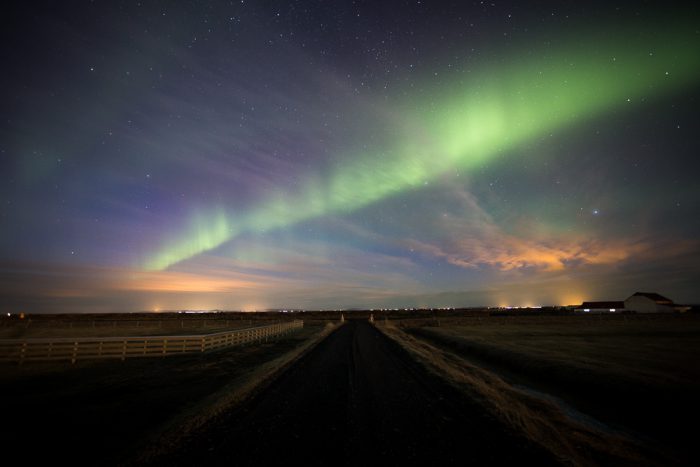
Optical Zoom Level
Zoom can be sub-divided into two types: digital and optical zoom.
Digital zoom is commonly found on smartphones, and is where the center of the picture is cropped, then expanded to fill the frame. Although this does work as a zoom method, photo quality drops off significantly as you are using only the center of the image sensor, discarding any image data that is recorded at the edges of the frame. The digitally zoomed image is only stored to the memory card as a full resolution photo by upscaling this otherwise lower resolution picture. If you are serious about taking great photos, then you should always try to avoid digital zoom.
Optical zoom is the preferred zoom method for image quality, as it uses moving pieces of glass within the lenses to enlarge the image hitting the sensor. The full width of the sensor is used, and the photo does not therefore have to be upscaled.
All cameras reviewed here have some degree of optical zoom available to them, with the level of optical zoom denoted by the magnification possible from the lenses widest setting. This is often also seen given in millimetres, relative to a 35mm, full frame camera. In this case, anything under 25mm is considered wide angle, while anything over 50mm is considered a mild telephoto lens, then a strong telephoto lens at over 100mm.
Depending on your style on photography, this will matter either more or less to you. For example, if you are interested in wildlife photography, then you will want the compact camera with best zoom, in the 200 -300mm range, whereas portraits are often better at fixed, mid-range focal lengths like 50mm.
Image Stabilization
Internal stabilization is not common in the best digital cameras under 300 dollars, but is a very useful feature if you can find it, assuming that you will be mostly taking photos handheld and not on a tripod.
More properly, it is called In-body image stabilization (IBIS), and reduces camera shake by having the sensor mounted on a plate that can move in 5-axes to offset motion imparted by your hands. Some cheaper cameras will have IBIS that digitally offsets the motion by cropping the frame, moving the recorded picture to cope with any hand shake.
The use of IBIS means that you can take pictures at a much slower shutter speed handheld, and it is therefore very useful for low light photography.

Autofocus Performance
Autofocus (AF) performance is something that you should pay close attention to, particularly on budget models as this is often where manufacturers cut costs. If you are looking for outstanding AF abilities, then none of the cameras in this article are likely to be appropriate, and I would recommend going for something in the next price bracket up, like the Sony A6400.
In particular, you should look out for slow, clunky AF that takes an age to hunt for the subject, and ideally some degree of object tracking. Pricier models of camera like the Sony A6400 have eye tracking modes, where the keep the eyes of your subject always in focus. You won’t get that on any of these cameras, but I have noted in the reviews which cameras have better AF than others.
If you are going to be a largely studio based photographer, for example you are looking for the best camera for YouTube under $300 that you can shoot selfie videos with, then AF performance is unlikely to matter, and you will likely be more concerned with video recording abilities.
Video Recording Capabilities
Although some cameras have specialist modes to create effects like slow motion and time lapse videos, try not to get sucked in by these and instead focus on the raw video performance of the camera.
The cameras in this article fall into two video resolution standards:
- 1080p Full HD – this is now an older standard that is still perfectly fine for most videos that you are going to post online or watch on smaller screens. Every camera in this article at least meets this standard for video production.
- 4K Ultra HD – this is the current standard, with significantly increased video quality over 1080p (4x the resolution to be precise), and is likely to remain future proof for the next few years at least. Only the best video cameras for under $300, the Lumix ZS70 and the Lumix FZ80 have this mode available.
Other than video resolution, you also want to take into account the frame rate that the camera can record at. The industry standard is 24 frames per second (fps), but this will produce choppy video if you are panning quickly or shooting very fast moving objects, like motorsports.
A higher frame rate means that you have the option to slow down footage during editing to create slow motion effects, and also provides more data for higher quality video.

Low Light Performance
Most budget cameras tend to perform poorly in low light, as they have relatively small sensors which cannot resolve objects as well in darker conditions, and tend to display more noise.
Manufacturers often use ISO range (eg. ISO 100 – 256,000) to try to indicate that their cameras have strong low light performance, but this misses the fact that photos become unusable due to noise at a much lower point than the top of the ISO range.
The best low light compact camera is therefore defined by having a larger sensor, rather than the highest ISO range. Low light performance is mentioned in the reviews below.
Camera Viewfinder & Display Screen
Camera viewfinders can come in optical types and electronic types, with the former being primarily found in DSLRs, and the latter being far more common in cheaper cameras like those we are looking at here.
Modern electronic viewfinders are as good as optical viewfinders in most respects, although you should expect that image quality is slightly lower through an electronic viewfinder. But this doesn’t matter if you have a large, high resolution rear screen on which to compose your photos, which most cameras reviewed here do.
Although rear screen size might not seem important, I have found that when using smaller screens, you can often overlook fatal flaws in your photos, such as soft focus, which become immediately apparent when getting the photos back onto your computer. This is less of a problem on larger, higher res screens, where you can really see the detail in your photos.
For an added bonus, some cameras under $300 even come with touchscreens, making selecting AF points simple, and meaning that you can easily control all of the settings on handy sliders. Touchscreens are particularly useful if you are looking for a beginner’s camera for photography.

WiFi and Other Features
In addition to the main criteria, there are a few extra features that most good cameras under $300 have, but will not be crucial to your photography.
Mic Input – if you are shooting a lot of video, then an external microphone input is particularly useful, as high quality audio is the defining feature of professional videos – just take a look at the top YouTube vloggers for proof. Internal microphones on budget cameras tend to be less good, though are perfectly usable for everyday, home use.
WiFi – lets you control your camera from your phone, even seeing a live view picture of the screen in most cases. This can be particularly useful for shooting time lapse series, but also for transferring photos directly from your camera to your phone. This way, you don’t need to go back to your computer for photo editing, and after a quick tidy-up in Snapseed or Photopea, you have finished photos suitable for sharing, all in super-quick time.
GPS – appends a GPS position to each photo as you take it, allowing you to look back over your travels and easily find which photos you have taken where. This is mainly for travel photographers.
RAW Photos – if your camera can take RAW photos in addition to JPGs, then you open up a whole new world of possibility for photo editing. RAWs contain all of the image data saved directly from the sensor, rather than the compressed, edited version you find in JPGs. This means that you have a lot more leeway with your editing, and lets you start on the road to creating professional photos.
Battery Life – without a long battery life, you might find yourself spending a lot of time changing batteries in-the-field. You also don’t want to have to carry around a large number of spares, or you negate the reason for having a small, light, compact camera.
Value for Money
What you consider to be value for money for you will depend largely on how you intend to use your new camera. If you are looking for a simple to use, home camera, then you will most likely want the best point and shoot camera under $300, like the , whereas if you are a content creator, then it might be the best vlog camera under 300 dollars, the Lumix ZS70.
Ultimately, know that every camera reviewed here has been rigorously tested against all of the criteria above, and has come out with a high score – everything in this list will be good value for money for you.
Don’t forget that you will almost certainly need to edit your photos to some degree. Photoshop is, in my opinion, the best software for photo editing, and along with Lightroom makes the photo editing workflow a breeze. If you don’t yet have a copy, then Adobe have an excellent value for money photography plan that I use everyday, and I recommend you check out.
Final Thoughts on the Best Digital Camera Under $300
With recent issues in camera production, prices have been increasing so that many models that were available for under $300 are now slightly over. Whether this will remain the case into the future is hard to predict, but these models remain among the best cheap cameras around, with quite a step up in terms of features and performance from those that are significantly under $300.
For my money, the Panasonic Lumix series are the best cameras around the $300 price point, and definitely deliver value for money, but the Kodak Astro Zoom offers a fantastic long zoom range in a budget package if you don’t mind the extra bulk and weight.
Light & Pocket-Sized with a Long Zoom
- 30x zoom in a light 0.53lb (243g) camera
- 180 degree flip up 3 inch touch screen, plus electronic view finder
- 4K video recording
- 20.3 Megapixel sensor with 5-axis optical image stabilization
- Well-designed control ring allows for easy manual operation
- Only weighs 0.536 lbs (243 g)
Read More:
Learn the fundamentals of photo editing in Lightroom & Photoshop
What size of memory card should I buy?











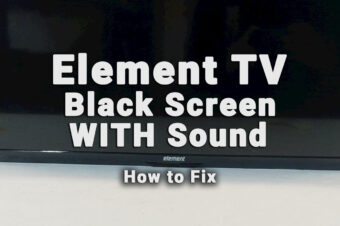
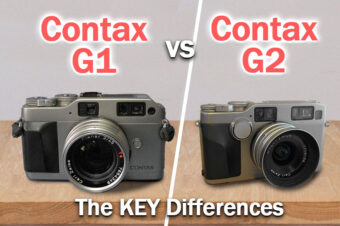
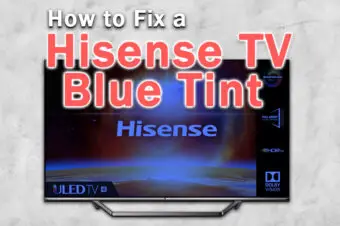
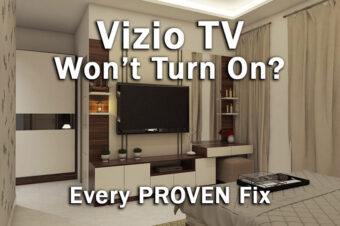
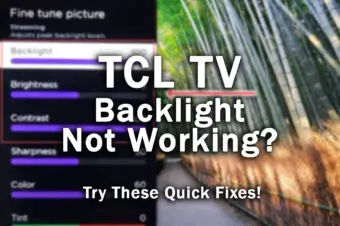
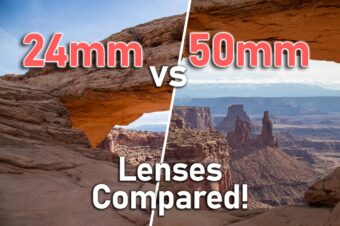
Leave a Reply